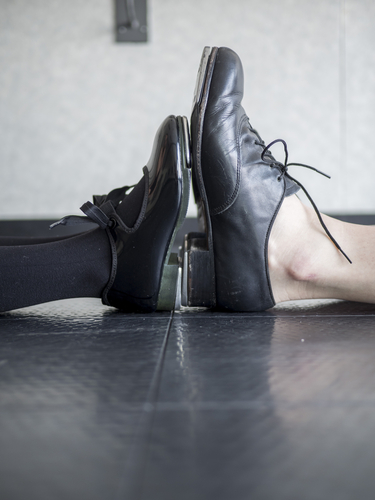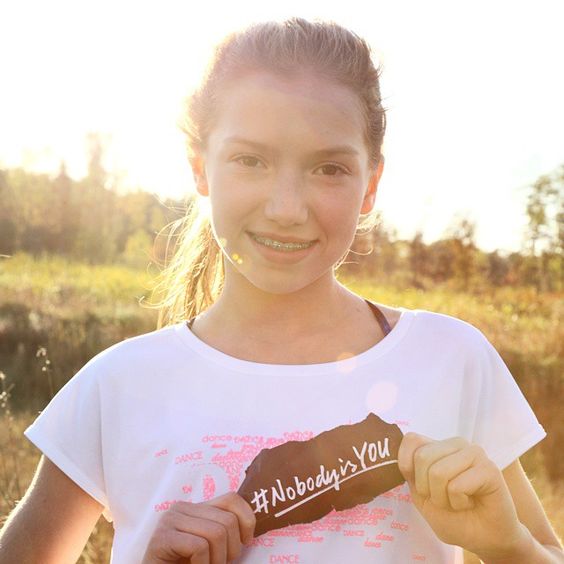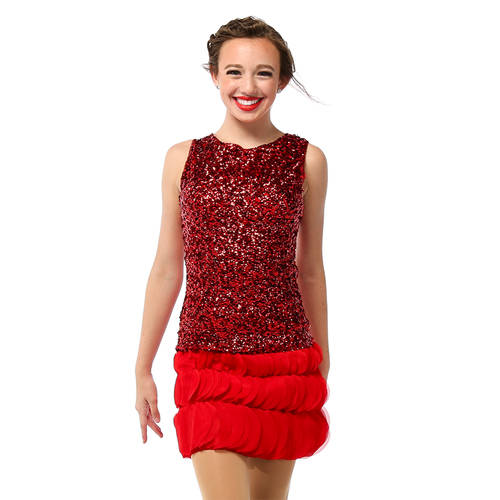Dance Talk
Our dance season never ends. Learn dance tips from the best.
How to Help Young Dancers Cope With Puberty


Helping your child navigate the challenging waters of puberty is tricky -- but especially so if she's a dancer. Chances are, she is hyper-focused on her body. And it's no secret that the dance industry can be especially critical. When puberty hits, suddenly your daughter's dance uniforms may no longer fit right. Her body also looks and moves differently than what she is used to do; meanwhile, her emotions are running wild. As a parent, what can you do to help her cope in a healthy way? Start by following these tips:
Tip #1: Be sensitive when it comes to your language - especially when dance uniforms get tight.
Sure, your daughter might be growing by leaps and bounds. But by focusing too much on how big they are getting -- and how quickly they're growing out of their dance uniforms -- you can actually wind up causing stress and anxiety in your young dancer. She likely perceives that part of her success in dance lies in her smaller physique. And when that suddenly gets threatened, it can be a traumatic experience, leading to feelings of insecurity and a desire to lose weight. This certainly isn't helped by a culture that has a big focus on being ultra-thin. That's why it's so important to not only be careful with what you say to your dancer about their changing body, but also the tone in which you say it.
Tip #2: Remind her that this phase is temporary.

Dancers are far more aware of their bodies than other athletes. Even when they're wearing the very best dance costumes, they're still staring into a mirror, watching their every move during a rehearsal and critiquing each aspect of their body. So those longer limbs and torso, or bigger belly is especially apparent to them. Every time they grow, they might feel like they are losing control, not only of their bodies, but also when it comes to issues of balance and flexibility. While that might be the case for a while, remind your daughter that this phase is a temporary one. It will pass soon enough and at the end of it all, she will have a strong, healthy body that will serve her well on the stage and in the studio.
Tip #3: Teach her not to compare.
When your daughter is used to being the smallest one in the class -- then suddenly has a growth spurt -- it can be upsetting for her. She could start comparing her body to other girls and finding an unhealthy level of fault with it. But the reality behind the situation is that puberty can be wildly different for each person. One dancer might have changes and growth spurts when they are 11, while another doesn't go through them until closer to 14. When your dancer knows the facts -- and understands the ways in which her body is changing and why -- it will help to make the phase less painful for her. So talk to your dancer early and often, always encouraging her not to compare herself to others.
Tip #4: Educate her on how puberty can impact performance.
It's important that both you and your dancer are well educated on issues that can arise during puberty, so you're not surprised by them. For instance, as your dancer begins to develop, her bones can grow longer and faster than the muscles and tendons. This can put her at a higher risk for dance injury during puberty.
Likewise, it's common for young dancers going through puberty to feel tighter and to have a harder time with jumps, splits and leg lifts, as a result. To offset this, it's a good idea for your dancer to focus on building up her core strength, so she has more stability and control. She can also focus more on stretching to overcome tightness she might be feeling in her legs and hips as her body grows.
Also, if you notice your child having trouble in dance class due to puberty-related challenges, speak to their teacher about it so they are aware. If your dancer is truly in pain, or having problems with knees or hips, consult with her doctor, too.
Tip #5: Encourage a healthy lifestyle.
Another area to focus on is encouraging your young dancer to eat in a healthy way and take care of her body. Unfortunately, dancers in puberty can be especially at risk for developing a syndrome known as the Female Athlete Triad. It pertains to three related conditions: 1) an imbalance between the amount of energy consumed and the amount used; 2) irregular menstrual cycles or amenorrhea, which is no menstrual cycle at all; 3) and bone loss that eventually leads to osteoporosis. With the industry's emphasis on maintaining a low body weight, many dancers begin dieting aggressively as they hit puberty and start to gain weight. This then can cause issues with menstruation and bone loss.
Tip #6: Keep communication open, honest and loving.
Chances are, when you bring up puberty, your young dancer might get embarrassed or start giggling uncontrollably. But the more you talk about this phase of life -- and the changes that come with it -- the more confident and in control she will be. You also want your dancer to have a safe place where she can feel like she can talk to you about her struggles and concerns. And the more you keep the door of communication open between the two of you, the easier it will be for her to come to you, whether she's upset because her dance uniforms don't fit, or someone made a comment about her changing body.
Puberty is a challenging time for every dancer, so expect some turmoil and tears. But as a parent, the more you prepare for it -- and prepare your young dancer for it -- the better you'll be able to face this new phase in life, together.

Follow Us
Follow Us online, join our conversations, engage with our teams around the world!